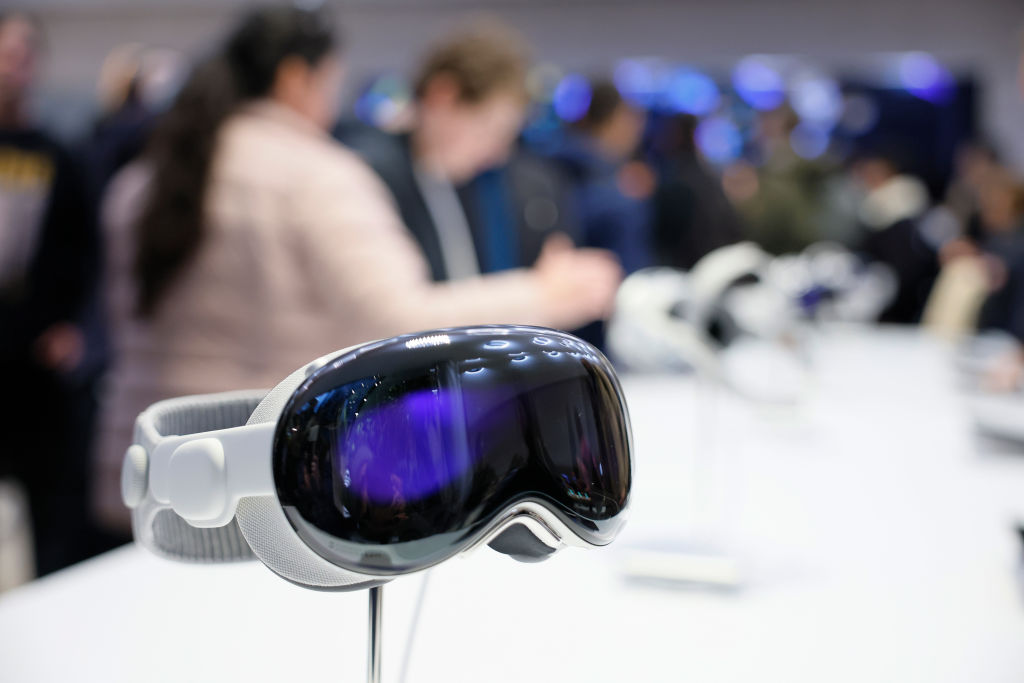Microsoft Surface Pro 4 vs. Apple iPad Pro: Which Is the Better Laptop Replacement?
High-end, multifunctional tablets are bridging the gap between work and play.

When the iPad tablet was introduced six years ago, many early adopters thought of it as a lightweight accessory for watching videos and browsing the Web. Laptops were still all about getting work done. But now high-end, multifunctional tablets are bridging the gap between work and play.
The Surface Pro 4 and the iPad Pro belong to this latest generation. Both add less bulk to your bag than even the most compact laptop, and they boast large screens and fast processing times. Both also pair with a detachable keyboard for easier typing, as well as a stylus to make tapping, sketching and writing feel more natural. But the biggest boon is their ability to multitask. These hybrid devices allow you to type a report while keeping an eye on your playlist, or view a Web page alongside an e-mail that you’re drafting.
Tablets that pack this much punch are pricey, ringing up at more than $1,000 once you add the extras. A comparably priced laptop will still offer you more memory and faster speeds; if you regularly push your laptop to the limit, even the most powerful tablet won’t be robust enough. But these machines are a solid option for most other users.

Sign up for Kiplinger’s Free E-Newsletters
Profit and prosper with the best of expert advice on investing, taxes, retirement, personal finance and more - straight to your e-mail.
Profit and prosper with the best of expert advice - straight to your e-mail.
Microsoft’s contender. The Surface Pro 4 ($899 for the 128-gigabyte model, plus $130 for the Type Cover keyboard) outstrips the competition when it comes to delivering laptop-level capabilities in tablet form. Billed as “the tablet that can replace your laptop,” this machine comes close. A full-fledged version of Windows 10, rather than an operating system designed for mobile devices, allows it to run desktop versions of programs such as Microsoft Office as well as photo- and video-editing programs. The base model with 128GB of storage sports 4GB of working memory. And multitasking is as easy as dragging up to four applications onto the screen.
Despite its ability to run programs and apps like a computer and its large, 12.3-inch screen, the Surface Pro 4’s compact footprint and adjustable kickstand make it an ideal choice for working on the go. The keyboard’s widely spaced keys and large trackpad look and feel like a traditional laptop’s, and it folds shut to protect the screen from scratches when not in use. The strong but light magnesium body keeps the tablet’s weight, including the keyboard, at less than 2.5 pounds.
Apple’s entry. Apple aficionados and other creative types won’t be disappointed with the iPad Pro ($949 for the 128GB, Wi-Fi–only version). The full-size smart keyboard ($169), which shares power with the tablet, snaps onto the tablet’s generous, 12.9-inch screen and doubles as a cover that automatically puts the iPad to sleep when it’s closed. The Pro runs the same iOS9 mobile operating system as the iPhone. It’s not as powerful as the Surface’s full-blown operating system, but a split view allows you to view two apps side by side. And new screen technology allows the tablet to respond well to the Apple pencil ($99).
Despite its larger screen, at 2.3 pounds (including the keyboard) the iPad Pro is lighter than the Surface Pro 4. Plus, the sleek, aluminum iPad is thinner, at just over one-fourth of an inch thick.
Get Kiplinger Today newsletter — free
Profit and prosper with the best of Kiplinger's advice on investing, taxes, retirement, personal finance and much more. Delivered daily. Enter your email in the box and click Sign Me Up.

-
 Stock Market Today: Stocks Soar on China Trade Talk Hopes
Stock Market Today: Stocks Soar on China Trade Talk HopesTreasury Secretary Bessent said current U.S.-China trade relations are unsustainable and signaled hopes for negotiations.
By Karee Venema
-
 2026 Disney Dining Plan Returns: Free Dining for Kids & Resort Benefits
2026 Disney Dining Plan Returns: Free Dining for Kids & Resort BenefitsPlan your 2026 Walt Disney World vacation now. Learn about the returning Disney Dining Plan, how kids aged three to nine eat free, and the exclusive benefits of staying at a Disney Resort hotel.
By Carla Ayers
-
 Apple’s Strong Start in Virtual Reality
Apple’s Strong Start in Virtual RealityThe Kiplinger Letter Apple’s first year in the VR market sets it up for long-term success. The tech giant’s vision will take years to pay off, though.
By John Miley
-
 After Decades of Promise, the Virtual Reality Era Has Finally Arrived
After Decades of Promise, the Virtual Reality Era Has Finally ArrivedThe Kiplinger Letter VR is a paradigm shift for consumer technology. The tech has a long road ahead, but amazing hardware already puts the huge potential on full display.
By John Miley
-
 How To Invest Your Tax Return
How To Invest Your Tax ReturnWhen thinking about how to invest your tax return, prioritize your financial health over aggressive – and risky – ideas like bitcoin.
By Jeff Reeves
-
 Smart Ways to Invest Your Money This Year
Smart Ways to Invest Your Money This YearFollowing a red-hot run for the equities market, folks are looking for smart ways to invest this year. Stocks, bonds and CDs all have something to offer in 2024.
By Jeff Reeves
-
 Roth IRA Contribution Limits for 2025
Roth IRA Contribution Limits for 2025Roth IRAs Roth IRA contribution limits have gone up. Here's what you need to know.
By Jackie Stewart
-
 Stock Market Predictions for 2024: Tesla, Apple and Rate Cuts
Stock Market Predictions for 2024: Tesla, Apple and Rate CutsNothing is ever certain, but top stock market predictions for 2024 include lower inflation, higher energy prices and an AI-related boost to GDP growth.
By Louis Navellier
-
 How to Search For Foreclosures Near You: Best Websites for Listings
How to Search For Foreclosures Near You: Best Websites for ListingsMaking Your Money Last Searching for a foreclosed home? These top-rated foreclosure websites — including free, paid and government options — can help you find listings near you.
By Bob Niedt
-
 Four Tips for Renting Out Your Home on Airbnb
Four Tips for Renting Out Your Home on Airbnbreal estate Here's what you should know before listing your home on Airbnb.
By Miriam Cross